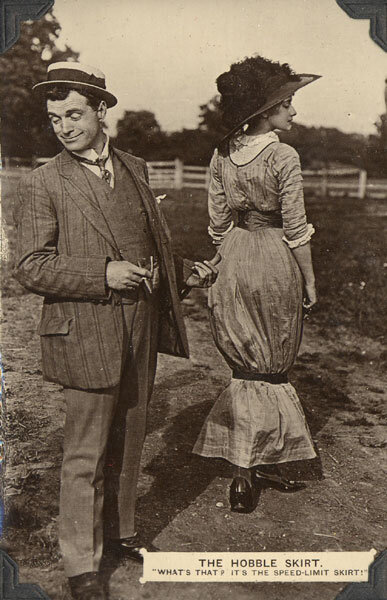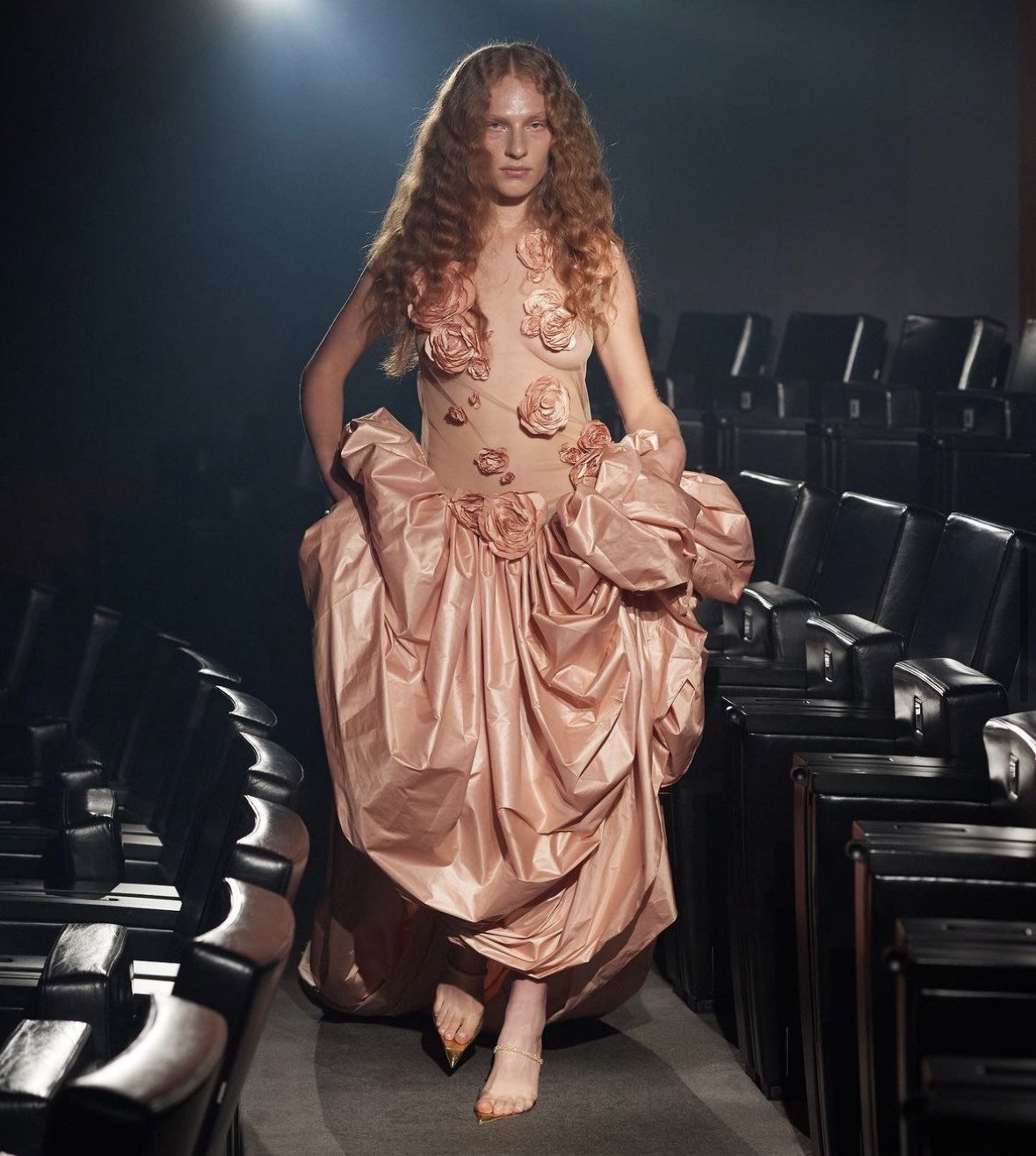The Edwardian Hobble Skirt Fad
The pencil skirt as we know and love today has been a staple in wardrobes since the mid-century, attributed with femininity and a favourite as office wear. Many have long made jokes about the impracticality of pencil skirts, how they restrict the legs when sat down and do not allow long strides when walking, but their predecessor the hobble skirt was even worse.
The early 20th century saw some of the most drastic changes in fashion than ever before, skirts became shorter, corsets were less of a necessity and dresses became tighter and while the women’s suffrage movement was gaining speed, the world was looking for new ways to economise, and using less fabric was encouraged. Ironically, as women were demanding more rights the hobble skirt came into being, a narrow and tight ankle-length garment that grew even narrower at the hem, utilising far less fabric than other popular styles. As with many things in history, it is hard to put a name to who truly invented this rather restrictive item of clothing but many have cited Paul Poiret who claimed credit himself. Poiret was a revolutionary designer in the early 20th century so it is completely reasonable to believe it could be all his doing. You can read more about him here.
A postcard from 1911.
Some have theorised that the idea for the hobble skirt was all inspired by the first woman to ride in an aeroplane! In 1908, the Wright Brothers put on a demonstration in Les Mans, France, and a Mrs Edith Hart O.Berg asked for a ride. To stop her dress from flying up around her ankles will in the air, which could have caused a scandal, she decided to wrap a piece of rope around her ankles, securing her dress.
Whoever did design the hobble skirt, and for whatever reason, had struck gold as its popularity began to soar in 1910. One headline from June 1910 said, “The Hobble Is The Latest Freak In Women’s Fashion; Skirts Are So Tight Around The Ankle That Locomotion Is Seriously Impeded And Speed Is Impossible.”
It should be stated that while these skirts were popular, it was mainly only with the upper class and those who could afford to choose the inability of walking. Much like today, those in higher society who can afford whatever they want will often place fashion over functionality, and this is a marvellous historical example.
The Missouri History Museum.
By 1912, the impracticality of the hobble skirt was more than obvious and amendments started to be made. A concealed slit, useful pleat and convenient draping here and there allowed some greater movement for the wearer. With slews of hobble skirt induced incidents being reported day after day the skirts began to disappear. By 1915 they were simply fashion history.
There are certain historical fashion trends and fads that have confused historians for years, many just make no sense. This is one of them. Who thought this was a good idea? But hey, we still adore a silly fashion fad today so perhaps we shouldn’t judge!










